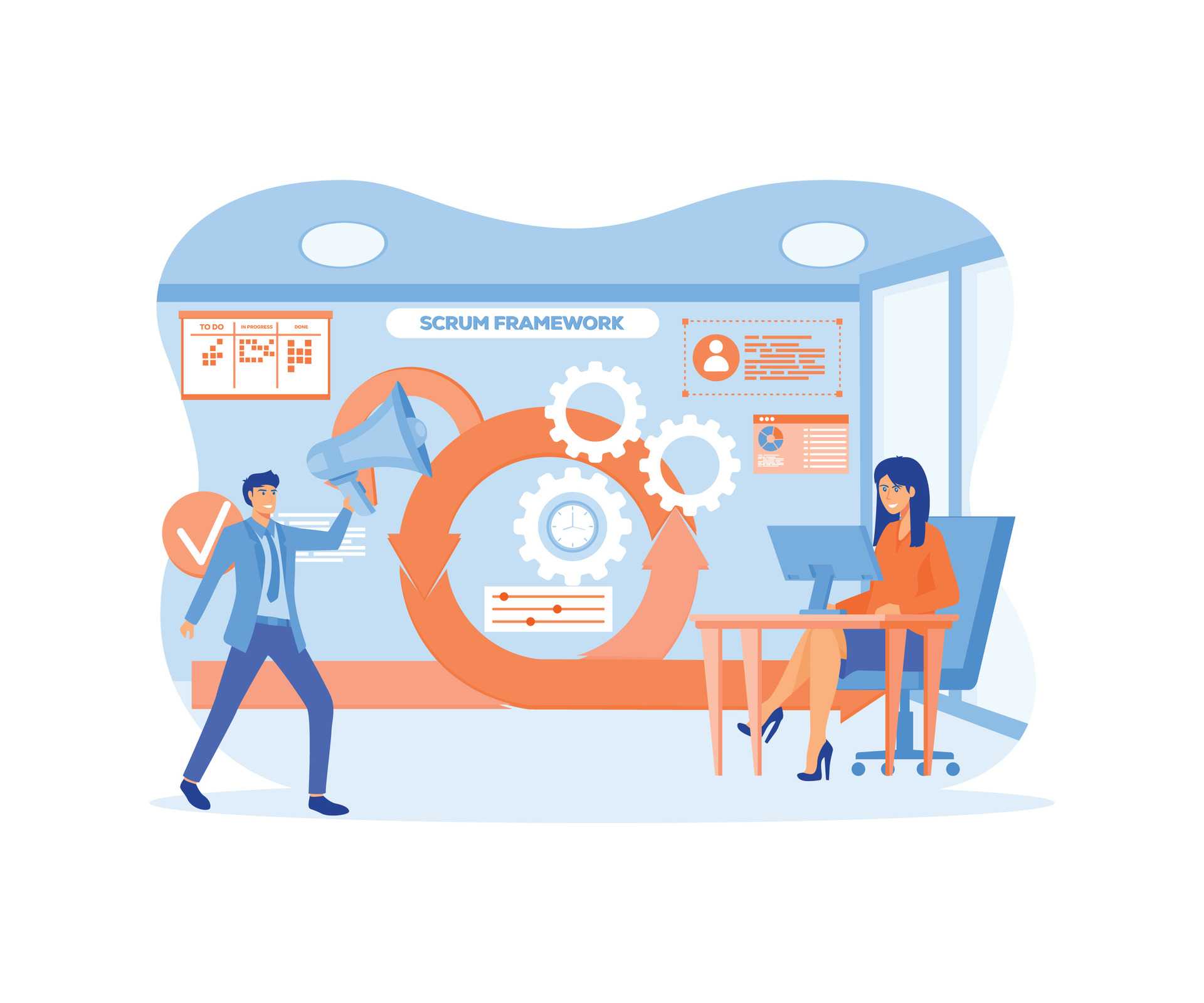SAFe Scrum Master Certification Training Highlights in New York , United States
The Most Effective SAFe Scrum Master Certification Exam Preparation
SAFe Scrum Master Exam Details in New York by Scholaracad Traning
The SAFe Scrum Master (SSM) exam is a key assessment for individuals looking to validate their knowledge and skills in implementing the SAFe (Scaled Agile Framework) methodology. This certification is crucial for professionals aiming to excel as Scrum Masters in large-scale Agile environments.
Exam Structure:
-
Number of Questions: 45 multiple-choice questions
-
Duration: 90 minutes
-
Passing Score: 35 out of 45 questions (77%)
-
Format: Online, with remote proctoring
-
Languages Available: English, and other languages as per availability
Key Areas Covered in the Exam:
-
SAFe Agile Principles:
-
Understanding key SAFe principles, such as Lean thinking, Agile values, continuous delivery, and the importance of team collaboration in delivering value efficiently.
-
-
Scrum Framework:
-
Deep knowledge of Scrum practices, including Sprint planning, Daily stand-ups, Sprint reviews, and Retrospectives.
-
Familiarity with Scrum artifacts like the Product Backlog, Sprint Backlog, and Increment.
-
-
Roles and Responsibilities:
-
Understanding the role of the Scrum Master in facilitating Scrum ceremonies and helping the team overcome obstacles.
-
Knowing the responsibilities of the Product Owner, Release Train Engineer (RTE), and other roles within the SAFe framework.
-
-
Team Facilitation:
-
Effective facilitation of Scrum ceremonies (e.g., Sprint planning, stand-ups, retrospectives).
-
Fostering team collaboration and continuous improvement.
-
-
Scaling Scrum with SAFe:
-
Applying the Scrum framework to larger, multi-team environments using SAFe.
-
Understanding the Agile Release Train (ART) and how it works within the context of SAFe to align multiple Scrum teams toward a common goal.
-
Certification Renewal:
To maintain your SAFe Scrum Master certification, you must:
- Complete 16 PDUs (Professional Development Units) annually.
- Pay a renewal fee (specific fee details may vary).
Preparation Tips:
-
Training Courses: Taking an official SAFe Scrum Master course through an accredited provider will give you the structured learning needed to succeed in the exam.
-
Practice Tests: Use practice exams to familiarize yourself with the question format and identify areas for improvement.
-
Study Materials: Ensure that you thoroughly review the SAFe Scrum Master handbook and other recommended resources provided during training.
This certification is ideal for professionals looking to advance their career in Agile and SAFe environments. By mastering these topics, you’ll be able to contribute to the success of large-scale, Agile projects while helping teams deliver high-quality products and services.
High Demand For SAFe (Scaled Agile Framework) Professionals in New York , United States
SAFe Scrum Master Certification Among the Highest Paying Certifications





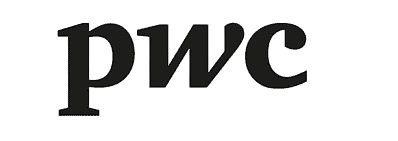
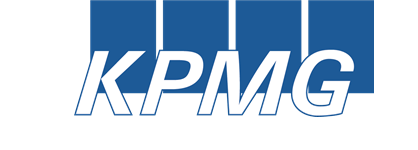
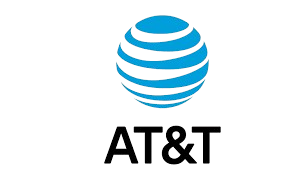


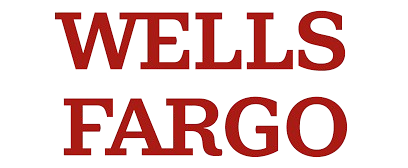
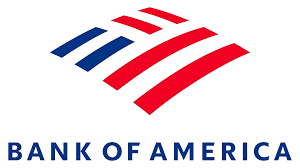

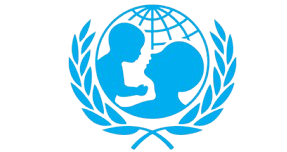


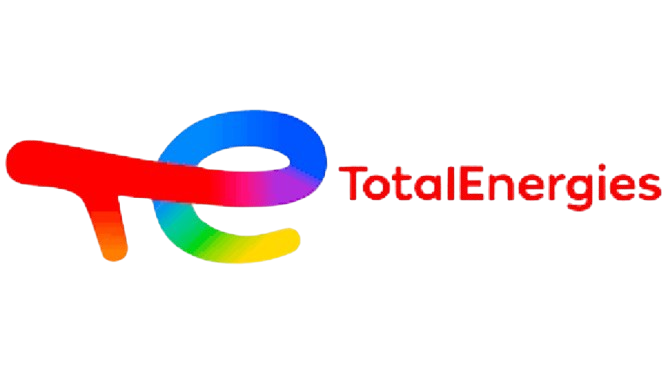




SAFe Scrum Master Certification for New York by scholaracad Traning
Summary
With the proliferation of the Agile method, the SAFe (Scaled Agile Framework) Scrum Master Certification has become one of the most preferred certifications for Agile professionals. Thus, gaining this certification can boost your qualifications if you want to grow your career in New York as an Agile professional. This SAFe Scrum Master (SSM) certification enables you to upskill and practices you to successfully run an Agile team in an enterprise setup. In this piece, you will learn about the SAFe Scrum Master certification overview, its cost, benefits, exam, and practice test.
Overview of SAFe Scrum Master Certification
The SAFe Scrum Master (SSM) is for those who plan on not only leading Agile teams but also helping to implement SAFe in larger enterprises. SAFe is a framework that integrates Agile, Lean, and DevOps workflows into a single scalable increment to deliver solutions on scale. This will give you a look at the SAFe principles, roles, responsibilities, and the approach will help you implement and to be successful in your domain.
In New York, where the need for Agile-certified professionals is on the rise each day, the SSM certification is considered a significant qualification. This course will help the participants develop and lead team, cross-functional teams through to carry out Agile processes in a scaled manner.
SAFe Scrum Masters assist organizations in aligning Agile practices at the team and program levels to help ensure that teams are aligned with business goals. No matter if you are a new to Scrum Master or one looking to deepen Agile skills or experience-ledcussion, this certificate, in a holistic way, provides you with a literature foundation.
Why Scholaracad For SAFe Scrum Master Certification Training in New York , United States
The ScholarAcad Advantage
Cost of SAFe Scrum Master Certification in New York by scholaracad Traning
The SAFe Scrum Master (SSM) Certification is a valuable credential for those looking to advance in agile project management, and its cost can vary depending on factors like training provider, package, and location. Here’s an overview of the typical costs involved in obtaining the SAFe Scrum Master Certification in New York:
1. Training Course Cost
-
Price Range: The cost for SAFe Scrum Master certification training generally ranges from $1,000 to $2,000 in New York.
- What’s Included: This fee typically includes:
-
Course Materials: Access to digital resources, slides, and handouts.
-
Practice Exams: Many providers include practice exams to help you prepare for the certification test.
-
Exam Fee: The cost of the certification exam is often bundled into the price.
-
- Course Duration: The training typically lasts 2 to 3 days and is designed to be an intensive, immersive learning experience.
2. Additional Costs
-
Comprehensive Packages: Some training providers offer premium packages that include additional resources such as:
-
Study Guides
-
One-on-One Coaching Sessions
-
Post-Certification Support (e.g., access to webinars or follow-up sessions)
-
These packages tend to be more expensive and may push the cost up to the higher end of the range.
- Group Discounts: If you are enrolling as part of a team, many providers offer discounts for group enrollments. This could be a great way to save if multiple colleagues are pursuing the certification.
3. Employer Sponsorship
-
Professional Development: Many employers recognize the value of SAFe Scrum Master Certification for their teams and may offer sponsorship or reimbursement for the cost of the training and certification exam as part of your professional development program. It’s worth checking with your employer to see if this is an option.
Final Thoughts
Obtaining your SAFe Scrum Master Certification is an investment in your career, with potential for higher salaries, greater job opportunities, and more advanced responsibilities. The total cost for training and certification in New York is typically between $1,000 to $2,000, and additional packages and discounts can affect the final price.
Make sure to weigh the cost against the benefits, and consider whether additional resources, such as practice exams or coaching sessions, will be helpful in your preparation.
SAFe Scrum Master Certification Certification Course Reviews in New York , United States
Our Learners Love Us
Umesh Koli was my trainer for Scholaracad's CAPM weekend batch in February. As a recent college grad, project management felt like a whole other language. But Umesh used examples from the NYC finance scene that clicked, and those templates made planning my small projects at work so much easier. My understanding is way better, work's simpler, and I passed the CAPM on my first try! Feeling confident now.

Junior Analyst
Scholaracad's ITIL v4 Foundation training was work eye-catching! The concepts were simplified and easy to grab. I learned quickly with trainer James, and the great learning experience helped me pass the exam the next day! I was skeptical about online training, but Scholaracad proved me wrong. Definitely coming back for more!

IT Support Analyst
Yo, let me tell you, Scholaracad's online PMP prep was the real deal. I was drowning in project management jargon, but after their course in late February, I felt like I could take on anything. Passed my PMP last week! Thanks, Scholaracad, you guys are straight up awesome.

Project Manager
1. Module: Introduction of Scrum in SAFe
- Concepts of Basic Agile Development
- Basics of Scrum
- Establish Agile Team in SAFe Enterprises
2. Module: Scrum Master Role Characterization
- Scrum Master Responsibilities
- Effective Scrum Master Characteristics
- High-performing Teams
- Use Powerful Questions to Coach Agile Team
- Team Events
- Cross Team Collaboration
- Resolve Conflicts in Teams
3. Module: Experience PI Planning
- Basics of PI Planning
- Drafting PI Planning
- Business Value and Final Plans
- PI Objectives and Final Plan Review
- Facilitate PI Planning
4. Module: Facilitate Iteration Execution
- Plan Iteration
- Track Progress of Iteration
- Refine Backlogs
- Facilitation Iteration Reviews
- Implement Relentless Improvement
- Supports Release-on-Demand and DevOps
5. Module: Finish PI
- Coach IP Iteration
- Preparing Team to Inspect & Adapt Event
6. Module: Practice SAFe
- SAFe Practice in Organizations
View More
SAFe Scrum Master Certification Certification Path in New York , United States
Your Path to Acing Your SAFe Scrum Master Certification Exam

Grasp the overarching structure and how different components interconnect.
Understand the Scrum framework, its roles, events, artifacts, and ceremonies.
Grasp the principles and practices of Kanban for visualizing work and flow.
Understand the responsibilities of a SAFe Scrum Master.
Believe in continuous improvement and learning.
Participate in simulations, case studies, and practical exercises.
Practice with Mock Exams and Take your exam.
Practice Test for SAFe Scrum Master Certification in New York , Scholaracad Traning
The SAFe Scrum Master certification exam tests your understanding of the SAFe framework and Scrum methodology. To effectively prepare for the exam, taking practice tests is one of the most useful strategies. They help simulate the actual exam conditions, giving you a feel for the question types and time constraints.
Here’s why and how you can benefit from practice tests:
Why Practice Tests Are Crucial:
-
Familiarize Yourself with the Exam Format: Practice tests help you understand the multiple-choice question format and the types of questions that will be asked on the real exam. This familiarity reduces any surprises on exam day, allowing you to focus on answering the questions correctly rather than figuring out the structure of the exam.
-
Assess Your Readiness: By completing practice tests, you can gauge whether you are truly prepared for the exam. These tests simulate the actual conditions of the exam and give you a sense of how well you know the content. This feedback is essential for fine-tuning your study approach.
-
Identify Areas for Improvement: Practice exams help you identify weak spots in your knowledge. For example, you might find that you struggle with certain topics like SAFe ARTs (Agile Release Trains) or Scrum ceremonies. By pinpointing these areas, you can devote more time to reviewing and reinforcing them before the actual exam.
-
Time Management: The SAFe Scrum Master exam has a strict time limit, so managing your time effectively is essential. Practice tests can help you get accustomed to answering questions under time pressure, ensuring that you can complete the exam within the allotted time.
Areas to Focus on in the Practice Test:
Here are some of the key areas that are commonly covered in the SAFe Scrum Master practice test:
1. Scrum Master Roles and Responsibilities:
-
The Scrum Master is a key facilitator in the Agile process. They help the team adhere to Scrum practices, remove obstacles, and ensure smooth collaboration.
- Questions may focus on:
-
The role of the Scrum Master in facilitating team events.
-
How the Scrum Master helps teams continuously improve.
-
Handling conflicts and coaching teams to be self-sufficient.
-
2. Agile Ceremonies:
Understanding the Scrum ceremonies (events) is crucial for both Scrum Masters and team members. These ceremonies are fundamental to running a successful Sprint.
- Questions may cover:
-
The purpose of Sprint Planning, Daily Standups, Sprint Review, and Sprint Retrospectives.
-
How to facilitate each ceremony effectively and ensure participation from all team members.
-
3. Team Dynamics:
The Scrum Master plays a critical role in fostering collaboration and improving team performance. They help create a high-performing, cross-functional team.
- Questions may ask about:
-
The Scrum Master’s role in coaching the team to improve collaboration.
-
Techniques for resolving team conflicts.
-
Helping teams with continuous improvement and self-organization.
-
4. SAFe Framework:
The SAFe framework extends Scrum to an enterprise level, encompassing Agile Release Trains (ARTs) and Program Increments (PIs). It’s important to understand how Scrum fits into the SAFe environment.
- Questions may test knowledge of:
-
How Scrum teams interact within a larger Agile Release Train (ART).
-
The concept of Program Increments and how they align with business goals.
-
The coordination of multiple Scrum teams working on a common goal in a SAFe environment.
-
How to Prepare Using Practice Tests:
-
Start with a Baseline: Take a practice test early in your preparation to see how much you already know. This will give you a good starting point and guide your focus.
-
Review Incorrect Answers: After completing a practice test, carefully review the answers to questions you got wrong. Understanding why an answer is correct or incorrect will help you grasp important concepts.
-
Track Progress: As you take more practice tests, track your scores and improvement over time. This will help you see how well you’re mastering the content and if you need to spend more time on certain topics.
-
Use Multiple Resources: In addition to taking practice tests, use SAFe Scrum Master study guides, attend training courses, and participate in online discussion groups to deepen your understanding.
What You Will Learn
Learning Objectives
Benefits of SAFe Scrum Master Certification in New York, Scholaracad Traning
-
Career Growth – In New York, the demand for certified Scrum Masters continues to rise as more organizations adopt Agile methodologies. By obtaining the SAFe Scrum Master certification, you will stand out in the competitive job market, improving your chances of landing a rewarding position.
-
Higher Earning Potential – Agile professionals, particularly those with SAFe certifications, tend to earn higher salaries than their non-certified counterparts. On average, a certified Scrum Master in New York can earn anywhere between $90,000 and $120,000 annually, depending on experience.
-
Improved Team Efficiency – As a certified SAFe Scrum Master, you will have the tools to help your teams deliver high-quality results. You will learn how to facilitate Scrum ceremonies, resolve conflicts, and help teams stay aligned with their objectives, boosting overall team productivity.
-
Global Recognition – SAFe is recognized globally, which means that the certification opens up opportunities not just in New York but in other cities worldwide. This is particularly useful for individuals looking to work in multinational companies or who might want to relocate in the future.
-
Continuous Learning – With a focus on Agile principles and frameworks, the SAFe Scrum Master certification encourages a culture of continuous learning and improvement. This mindset is valuable for both personal development and organizational growth.
-
Better Understanding of Scaling Agile – One of the primary benefits of the SAFe framework is its emphasis on scaling Agile practices for large organizations. This gives professionals an understanding of how to work with multiple teams, manage dependencies, and align efforts across the organization, which is crucial for large projects.
Conclusion
The SAFe Scrum Master Certification is an excellent choice for professionals in New York who are looking to advance their careers in Agile project management. With a solid understanding of the SAFe framework, Scrum principles, and practical skills in facilitating Agile teams, you’ll be well-equipped to excel in any organization. Investing in this certification can lead to career growth, higher earning potential, and an ability to drive Agile success in large-scale projects.
By preparing thoroughly for the exam and leveraging practice tests, you can ensure your success in obtaining the certification. Additionally, with the growing demand for Agile professionals in New York, the SAFe Scrum Master certification provides an edge in a competitive job market, making it an investment worth considering for anyone serious about their Agile career.
New York City (NYC) is one of the most famous and influential cities in the world, known for its cultural diversity, landmarks, and economic power. Here’s a quick overview of the city:
Overview of New York City:
- Location: New York City is located in the state of New York, in the northeastern United States. It is a global financial, cultural, and media hub, often referred to as "The Big Apple."
- Population: As of the most recent estimates in 2023, the population of New York City is approximately 8.5 million people, making it the most populous city in the United States.
- Area: The city spans over 300 square miles (789 square kilometers).
Famous Places in New York City:
-
Statue of Liberty: One of the most iconic landmarks in the world, the Statue of Liberty stands at the entrance of New York Harbor and symbolizes freedom and democracy.
-
Central Park: A vast green oasis in the middle of Manhattan, Central Park is a popular spot for locals and tourists, offering walking trails, lakes, museums, and more.
-
Times Square: Known for its bright lights and bustling atmosphere, Times Square is the entertainment heart of the city, famous for Broadway shows, restaurants, and shopping.
-
Empire State Building: Once the tallest building in the world, the Empire State Building is a symbol of NYC's skyline and offers stunning views of the city from its observation decks.
Who Can Attend The SAFe Scrum Master Certification Certification Training in New York , United States
Who This Course Is For

Prerequisites For SAFe Scrum Master Certification in New York , United States
Prerequisites and Eligibility
Familiarity with Agile principles and the Scrum framework is beneficial.
Completion of the SAFe for Teams course is required to establish a foundation in SAFe concepts.
Passing the SAFe Scrum Master exam (SSM) validates your understanding of SAFe and Scrum principles.
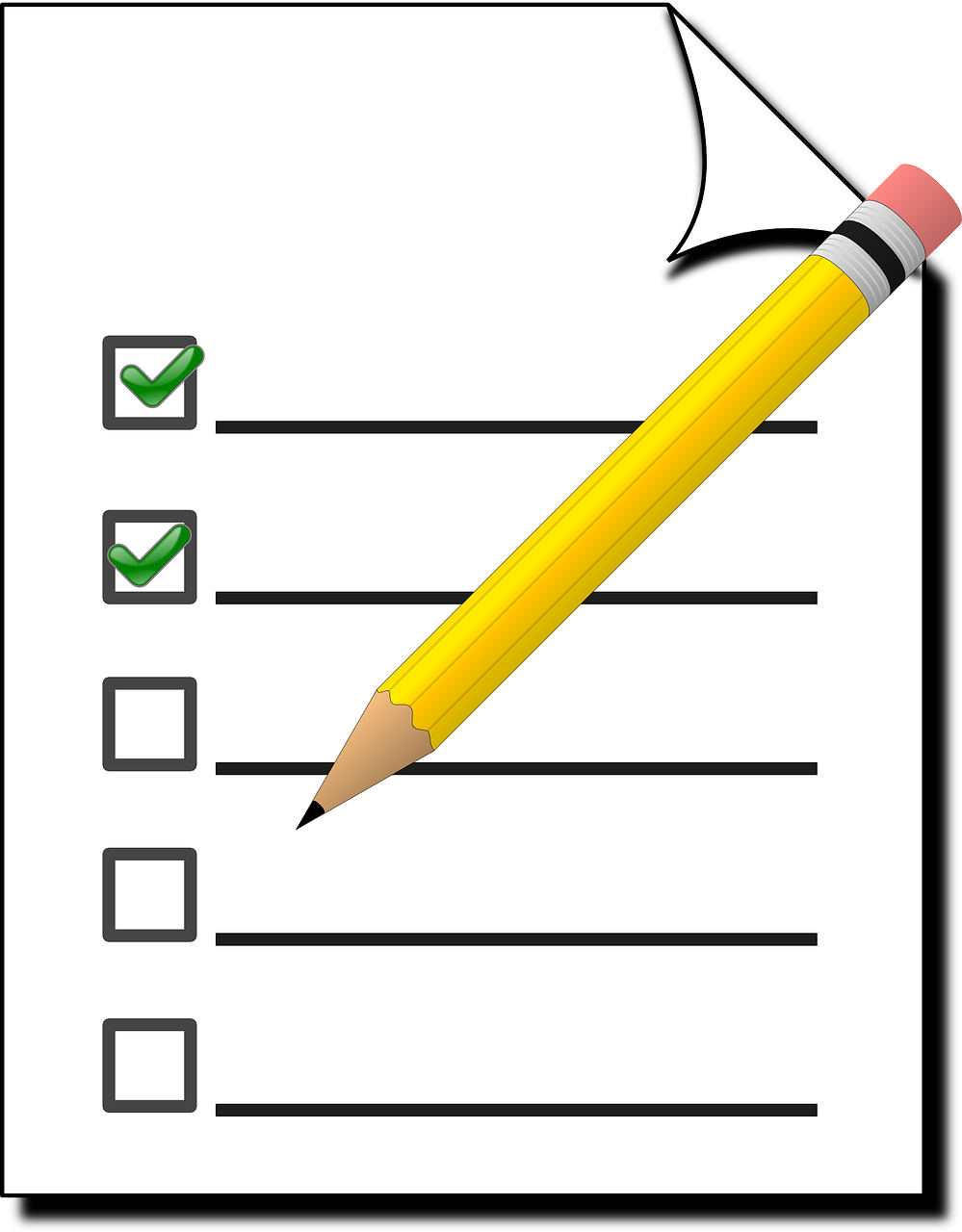
SAFe Scrum Master Certification Certification FAQs
1. What is a SAFe Scrum Master?
A SAFe Scrum Master is a professional who facilitates Agile teams within the Scaled Agile Framework (SAFe) to deliver value efficiently. They coach teams, remove impediments, and ensure alignment with SAFe principles.
2. What is the difference between a Scrum Master and a SAFe Scrum Master?
A traditional Scrum Master focuses on a single team, while a SAFe Scrum Master works within the broader SAFe framework, often supporting multiple teams and aligning them with the Program Increment (PI) objectives.
3. What are the key responsibilities of a SAFe Scrum Master?
- Facilitating Agile ceremonies (e.g., Sprint Planning, Daily Standups, Retrospectives).
- Removing impediments for the team.
- Coaching teams on Agile principles and practices.
- Supporting the Product Owner in backlog refinement.
- Ensuring alignment with PI objectives.
4. What skills are required to become a successful SAFe Scrum Master?
- Strong facilitation and communication skills.
- Deep understanding of Agile and SAFe principles.
- Problem-solving and conflict resolution abilities.
- Leadership and coaching skills.
- Knowledge of Lean-Agile practices.
5. Is certification necessary to become a SAFe Scrum Master?
While not mandatory, certification (e.g., SAFe Scrum Master Certification) is highly recommended as it validates your knowledge and increases employability.
6. What is the SAFe Scrum Master Certification?
The SAFe Scrum Master Certification (SSM) is a credential offered by Scaled Agile, Inc. It demonstrates expertise in applying Scrum within the SAFe framework.
7. How do I get certified as a SAFe Scrum Master?
- Attend the official SAFe Scrum Master course (2-day training).
- Pass the online exam.
- Maintain certification through continuous learning and renewal.
8. What is the cost of the SAFe Scrum Master certification?
The cost is typically around $995-$1,295 for the 2-day course, depending on the training provider.
9. How long does the SAFe Scrum Master certification last?
The certification is valid for 1 year and requires renewal annually by earning 10 continuing education units (SEUs) and paying a renewal fee.
10. What is the average salary of a SAFe Scrum Master?
The average salary varies by location and experience:
- USA : $90,000–$120,000 per year.
- India : ₹10–20 lakhs per year.
- Europe : €60,000–€90,000 per year.
11. What industries hire SAFe Scrum Masters?
Industries include:
- IT and software development.
- Financial services.
- Healthcare.
- Manufacturing.
- Government and defense.
12. What is the career path for a SAFe Scrum Master?
Junior Scrum Master → SAFe Scrum Master → Release Train Engineer (RTE) → Agile Coach → Transformation Lead.
13. Can a SAFe Scrum Master work remotely?
Yes, many organizations allow remote work, especially in tech companies or those with distributed teams.
14. What tools should a SAFe Scrum Master be familiar with?
- Jira, Azure DevOps, or Rally for Agile project management.
- Confluence or SharePoint for documentation.
- Collaboration tools like Slack, Microsoft Teams, or Zoom
15. What is a Release Train Engineer (RTE), and how does it relate to a SAFe Scrum Master?
An RTE facilitates Agile Release Trains (ARTs) at the program level, coordinating multiple teams. A SAFe Scrum Master can advance to become an RTE.
16. What is the difference between a SAFe Scrum Master and an Agile Coach?
A SAFe Scrum Master focuses on team-level execution, while an Agile Coach works at the organizational level to drive Agile transformation.
17. How does SAFe differ from other Agile frameworks like Scrum or Kanban?
SAFe is a scaled framework designed for large enterprises, integrating Scrum, Kanban, and Lean principles to coordinate multiple teams.
18. What challenges do SAFe Scrum Masters face?
- Resistance to Agile adoption.
- Balancing team autonomy with organizational goals.
- Managing dependencies across teams.
- Aligning with PI objectives.
19. How important is experience in becoming a SAFe Scrum Master?
Experience in Agile methodologies and team facilitation is crucial. Prior roles as a Scrum Master, Project Manager, or Team Lead are beneficial.
20. Can a non-technical person become a SAFe Scrum Master?
Yes, but understanding the technical aspects of the team’s work can enhance effectiveness.
21. What is a Program Increment (PI) in SAFe?
A PI is a timebox (typically 8–12 weeks) during which multiple Agile teams work together to deliver value. The SAFe Scrum Master ensures their team contributes to PI objectives.
22. What is PI Planning, and what role does the SAFe Scrum Master play?
PI Planning is a key event where teams plan work for the upcoming PI. The SAFe Scrum Master facilitates team preparation, participation, and follow-through.
23. How does a SAFe Scrum Master handle conflicts within the team?
By fostering open communication, mediating discussions, and helping the team find collaborative solutions.
24. What is the role of metrics in a SAFe Scrum Master’s job?
Metrics (e.g., velocity, burndown charts) help track progress, identify bottlenecks, and improve team performance
25. How does a SAFe Scrum Master contribute to continuous improvement?
By facilitating retrospectives, encouraging feedback loops, and promoting a culture of learning and adaptation.
26. What is the importance of servant leadership for a SAFe Scrum Master?
Servant leadership emphasizes empowering the team, removing obstacles, and fostering a collaborative environment.
27. How does a SAFe Scrum Master interact with the Product Owner?
They collaborate to ensure the backlog is well-refined, priorities are clear, and the team delivers value consistently.
28. What is the role of a SAFe Scrum Master in DevOps?
They support collaboration between development and operations teams to enable continuous delivery and integration.
29. Can a SAFe Scrum Master work with multiple teams?
Yes, they often support multiple teams, especially in large-scale Agile implementations.
30. What is the typical team size managed by a SAFe Scrum Master?
5–11 members per team, following the Scrum guidelines.
31. How does a SAFe Scrum Master handle scope changes?
By working with the Product Owner and stakeholders to assess impact, prioritize changes, and adjust plans accordingly.
32. What is the role of a SAFe Scrum Master in risk management?
They identify risks early, escalate when necessary, and help the team mitigate them.
33. How does a SAFe Scrum Master foster innovation?
By encouraging experimentation, supporting new ideas, and creating a safe environment for learning.
34. What soft skills are critical for a SAFe Scrum Master?
Empathy, active listening, adaptability, and emotional intelligence
35. How does a SAFe Scrum Master measure success?
Through team performance metrics, stakeholder satisfaction, and alignment with business goals.
36. What is the role of a SAFe Scrum Master in a distributed team?
Facilitating communication, ensuring alignment, and addressing challenges unique to remote work.
37. How does a SAFe Scrum Master stay updated with industry trends?
By attending conferences, joining Agile communities, reading blogs/books, and participating in webinars.
38. What are the common mistakes made by new SAFe Scrum Masters?
- Micromanaging the team.
- Focusing too much on processes rather than outcomes.
- Ignoring organizational culture and resistance.
39. How does a SAFe Scrum Master handle burnout in the team?
By promoting work-life balance, managing workload, and fostering a supportive team culture.
40. What is the role of a SAFe Scrum Master in Lean Portfolio Management?
They ensure the team’s work aligns with portfolio objectives and strategic themes.
41. .How does a SAFe Scrum Master contribute to value delivery?
By ensuring the team focuses on delivering high-priority features and meeting PI objectives.
42. What is the difference between SAFe 6.0 and earlier versions?
SAFe 6.0 introduced enhancements like the Continuous Learning Culture competency and improved guidance for Business Agility
43. What is the role of a SAFe Scrum Master in a Waterfall-to-Agile transition?
They guide the team in adopting Agile practices, address resistance, and ensure smooth integration into the SAFe framework.
44. How does a SAFe Scrum Master handle dependencies between teams?
By coordinating with other Scrum Masters and stakeholders to resolve cross-team dependencies.
45. What is the role of a SAFe Scrum Master in Agile maturity assessments?
They help evaluate the team’s Agile practices and identify areas for improvement.
46. How does a SAFe Scrum Master balance flexibility with deadlines?
By prioritizing work, managing scope, and ensuring the team stays focused on delivering value.
47. What is the role of a SAFe Scrum Master in fostering psychological safety?
They create an environment where team members feel safe to share ideas, take risks, and admit mistakes.
48. How does a SAFe Scrum Master handle resistance to change?
By understanding concerns, providing education, and demonstrating the benefits of Agile practices.
49. What is the role of a SAFe Scrum Master in fostering a Lean-Agile mindset?
They promote principles like customer focus, continuous improvement, and waste reduction.
50. What is the future outlook for SAFe Scrum Masters?
As organizations increasingly adopt Agile and SAFe, the demand for skilled SAFe Scrum Masters is expected to grow, making it a promising career choice.
View More
1. What are the key benefits of becoming a SAFe Scrum Master?
- Career growth in Agile and SAFe environments.
- Opportunities to lead and coach teams.
- Enhanced problem-solving and leadership skills.
- High demand for skilled SAFe professionals.
- Competitive salary and job security.
2. How does being a SAFe Scrum Master benefit my career?
It opens doors to roles like Release Train Engineer (RTE), Agile Coach, or Transformation Lead, offering upward mobility in Agile and Lean-Agile careers.
3. Does being a SAFe Scrum Master improve my leadership skills?
Yes, it enhances leadership abilities through servant leadership, team facilitation, and conflict resolution.
4. Is the SAFe Scrum Master role financially rewarding?
Yes, SAFe Scrum Masters earn competitive salaries due to their specialized skills in scaling Agile practices.
5. What personal satisfaction comes from being a SAFe Scrum Master?
Helping teams succeed, fostering collaboration, and seeing tangible results from your efforts provide immense satisfaction.
6. How does being a SAFe Scrum Master enhance my communication skills?
You’ll constantly interact with teams, stakeholders, and leadership, improving your ability to communicate effectively at all levels.
7. Does being a SAFe Scrum Master offer flexibility in work?
Yes, many organizations allow remote work, especially for experienced SAFe Scrum Masters managing distributed teams.
8. What are the networking benefits of being a SAFe Scrum Master?
You’ll collaborate with cross-functional teams, Agile coaches, RTEs, and leaders, expanding your professional network
9. How does being a SAFe Scrum Master contribute to organizational success?
By ensuring teams deliver value efficiently, aligning with business goals, and driving continuous improvement
10. Does being a SAFe Scrum Master make me more adaptable?
Yes, working in dynamic Agile environments helps you adapt quickly to changes and challenges.
11. What are the benefits of SAFe Scrum Master certification?
- Validates your expertise in SAFe and Agile principles.
- Increases employability and earning potential.
- Provides access to SAFe communities and resources.
12. How does being a SAFe Scrum Master foster innovation?
By encouraging experimentation, supporting new ideas, and creating an environment where creativity thrives.
13. Does being a SAFe Scrum Master improve team performance?
Yes, by removing impediments, facilitating ceremonies, and coaching teams on best practices.
14. How does being a SAFe Scrum Master promote work-life balance?
The role emphasizes servant leadership and team empowerment, reducing micromanagement and stress.
15. What are the mental health benefits of being a SAFe Scrum Master?
Fostering psychological safety and resolving conflicts can create a positive work environment, benefiting both you and your team
16. How does being a SAFe Scrum Master help with time management?
Facilitating Agile ceremonies and planning processes teaches you to manage time effectively and prioritize tasks.
17. Does being a SAFe Scrum Master increase my problem-solving skills?
Yes, addressing impediments and dependencies sharpens your ability to think critically and find solutions.
18. What are the benefits of working in a SAFe environment as a Scrum Master?
- Access to structured frameworks like PI Planning.
- Collaboration with multiple teams and stakeholders.
- Clear alignment with organizational goals.
19. How does being a SAFe Scrum Master enhance my resume?
Adding SAFe expertise makes your profile stand out, especially in large enterprises adopting scaled Agile practices.
20. What are the benefits of being part of the SAFe community?
Access to global networks, events, and resources that support continuous learning and professional growth.
21. How does being a SAFe Scrum Master benefit distributed teams?
Your skills in facilitating remote collaboration and resolving dependencies are invaluable for distributed teams
22. Does being a SAFe Scrum Master teach emotional intelligence?
Yes, understanding team dynamics and resolving conflicts require high emotional intelligence.
23. How does being a SAFe Scrum Master help organizations scale Agile?
By bridging gaps between teams and ensuring alignment with SAFe principles, you contribute to successful Agile scaling.
24. What are the benefits of fostering a Lean-Agile mindset?
Improved efficiency, reduced waste, and faster delivery of value to customers.
25. Does being a SAFe Scrum Master help with change management?
Yes, guiding teams through Agile transformations builds expertise in managing change effectively.
26. How does being a SAFe Scrum Master promote continuous learning?
You’re constantly exposed to new tools, techniques, and industry trends, fostering a culture of lifelong learning
27. What are the benefits of facilitating PI Planning?
PI Planning ensures alignment, clarifies objectives, and fosters collaboration across teams, leading to better outcomes.
28. How does being a SAFe Scrum Master improve stakeholder relationships?
By ensuring transparency, delivering value, and maintaining open communication with stakeholders.
29. Does being a SAFe Scrum Master help reduce project risks?
Yes, by identifying risks early and implementing mitigation strategies.
30. What are the benefits of working with cross-functional teams?
Exposure to diverse perspectives and skill sets enhances your understanding of different domains and improves collaboration.
31. How does being a SAFe Scrum Master drive customer satisfaction?
By ensuring teams focus on delivering high-priority features and meeting customer needs.
32. Does being a SAFe Scrum Master encourage innovation in the organization?
Yes, by fostering a culture of experimentation and continuous improvement.
33. What are the benefits of servant leadership in this role?
Empowering teams, building trust, and creating a supportive environment lead to higher engagement and productivity.
34. How does being a SAFe Scrum Master benefit product quality?
By promoting practices like continuous integration, testing, and feedback loops, you ensure higher-quality deliverables.
35. Does being a SAFe Scrum Master improve team morale?
Yes, by fostering psychological safety, recognizing achievements, and resolving conflicts.
36. What are the benefits of working in a fast-paced Agile environment?
You develop resilience, adaptability, and the ability to thrive under pressure.
37. How does being a SAFe Scrum Master contribute to business agility?
By aligning teams with strategic goals and enabling faster responses to market changes
38. What are the benefits of using metrics in this role?
Metrics help track progress, identify bottlenecks, and demonstrate the team’s impact on business outcomes
39. Does being a SAFe Scrum Master enhance my coaching skills?
Yes, coaching teams on Agile practices and helping them grow professionally develops your mentoring abilities.
40. How does being a SAFe Scrum Master promote DevOps practices?
By fostering collaboration between development and operations teams to enable continuous delivery.
41. What are the benefits of working with Product Owners?
Close collaboration ensures clear priorities, effective backlog management, and alignment with customer needs.
42. Does being a SAFe Scrum Master help reduce technical debt?
Yes, by promoting sustainable development practices and addressing issues early.
43. How does being a SAFe Scrum Master improve decision-making?
By encouraging data-driven decisions and empowering teams to self-organize.
44. What are the benefits of handling dependencies effectively?
Reduced delays, improved coordination, and smoother delivery of value.
45. Does being a SAFe Scrum Master help organizations achieve their goals?
Yes, by ensuring teams align with PI objectives and strategic themes.
46. How does being a SAFe Scrum Master promote a culture of trust?
By fostering transparency, open communication, and collaboration.
47. What are the benefits of working in a SAFe ecosystem?
Structured frameworks, clear roles, and alignment with organizational goals make scaling Agile easier.
48. Does being a SAFe Scrum Master prepare me for leadership roles?
Yes, the skills you develop position you for roles like RTE, Agile Coach, or Transformation Lead.
49. How does being a SAFe Scrum Master benefit the organization’s bottom line?
By improving efficiency, reducing waste, and delivering value faster, you directly impact profitability.
50. What is the long-term benefit of being a SAFe Scrum Master?
A fulfilling career with opportunities for growth, leadership, and making a meaningful impact on teams and organizations.
View More
View More
View More
View More
View More
Recommended Blogs For SAFe Scrum Master Certification Certification
Expert Articles on SAFe Scrum Master Certification
Read More...
Read More...
Read More...
New York: A Hub for Technology, Learning, and Careers
New York City (NYC) is a global leader in technology, innovation, and finance. It is known for its vibrant startup ecosystem, world-class universities, and focus on digital transformation. NYC is particularly strong in fintech, AI, and cybersecurity.
Key Locations
- Silicon Alley : One of the world’s largest startup ecosystems, hosting global companies like Google and Microsoft .
- New York University (NYU) : A leading institution driving research in AI, cybersecurity, and sustainability.
Why These Skills Are in Demand
New York’s tech sector is thriving, driven by government initiatives, private investment, and strong academic institutions. Key skills in AI, cybersecurity, fintech, and DevOps are essential.
- AI and Machine Learning : With a focus on smart cities, healthcare, and autonomous systems, New York needs professionals skilled in AI-driven solutions. Universities like NYU are driving AI research.
- Cybersecurity : Protecting critical systems in finance, government, and telecommunications is crucial. As New York expands its digital infrastructure, professionals skilled in cyber resilience ensure safety against cyber threats.
- Fintech : New York is a leader in global fintech innovation, with initiatives like Stripe driving financial inclusion. Skills in fintech are in high demand.
- DevOps : Enhancing collaboration between developers and operators accelerates software deployments. Tools like Jenkins and Kubernetes are widely adopted.
Need More Information ?
Have more questions or need personalized guidance ?

Our SAFe Scrum Master Certification Instructors in New York
Based in: New York, USA
Looking to master Agile and Scrum methodologies with a focus on EXIN Agile Scrum Master in the USA? Meet Emily Carter, a highly experienced and certified Agile and Scrum trainer based in New York. Emily is dedicated to helping individuals and teams adopt and excel with Agile and Scrum practices.
Professional Background:
Emily has over 10 years of experience working with Agile and Scrum frameworks in various industries, including software development, finance, and e-commerce in the USA. She has a deep understanding of different Agile approaches and is passionate about fostering high-performing teams.
Certifications & Strong Knowledge:
- EXIN Agile Scrum Master
- Certified ScrumMaster (CSM)
- Agile Fundamentals
- Strong Knowledge: Project Management Professional (PMP)®, Six Sigma, DevOps
Teaching Philosophy:
Emily believes in a practical, hands-on approach to Agile and Scrum training, focusing on real-world application and team collaboration. Her teaching philosophy emphasizes:
- Interactive Learning: Utilizing simulations, group activities, and discussions to ensure practical understanding.
- Agile Principles and Values: Deeply exploring the core values and principles of Agile and Scrum.
- EXIN Agile Scrum Master Focus: Providing specific guidance and preparation for the EXIN certification.
- Continuous Improvement: Fostering a mindset of continuous improvement within teams.
Course Offerings:
Emily offers a range of Agile and Scrum training programs:
- EXIN Agile Scrum Master Certification Workshops (In-Person and Virtual).
- Scrum Master Certification Courses (CSM).
- Agile Fundamentals and Practitioner Courses.
- Customized Agile and Scrum Training for Organizations.
Why Choose Emily?
- Local Expertise: Based in New York, Emily understands the US business environment.
- EXIN Certified: Holds the EXIN Agile Scrum Master certification.
- Practical Experience: Extensive experience implementing Agile and Scrum in diverse settings.
- Strong Knowledge Background: Comprehensive understanding of PMP, Six Sigma, and DevOps.
Location:
Emily is based in New York, USA, and offers training across the USA and virtually.

Emily Carter
Experience: 10 years
SAFe Scrum Master Certification Training Certification in New York , United States
Earn The Coveted SAFe Scrum Master Certification Certification
Sample Certificate Image
View More

Training Calender For Course SAFe Scrum Master Certification
Top Companies in New York Hiring SAFe Scrum Master Certification Professionals in 2025
| Company Name | Role | Job Description | Job Link |
|---|---|---|---|
| Amazon | Scrum Master | Amazon in New York is hiring a Scrum Master to support SAFe Agile delivery for cloud-based projects. You’ll facilitate sprint planning, daily stand-ups, and retrospectives, ensuring teams adhere to Agile principles. Your role involves coaching Product Owners on backlog refinement, removing blockers, and tracking progress using JIRA. With 5+ years of experience and SAFe certification, you’ll foster collaboration and drive continuous improvement. Your technical expertise and communication skills will ensure alignment with business goals. This role offers opportunities to work on innovative AWS solutions, enhancing your skills in a global tech leader. Amazon’s dynamic work culture supports career growth through learning programs and mentorship. Join a team committed to delivering high-quality solutions through scaled Agile frameworks, contributing to transformative technology initiatives. | Job Link |
| Senior Scrum Master | Google in New York seeks a Senior Scrum Master to lead SAFe Agile teams in delivering cutting-edge products. You’ll facilitate PI planning, sprint ceremonies, and dependency management, ensuring seamless Agile delivery. Your responsibilities include mentoring teams, coaching Product Owners on backlog management, and resolving impediments. Using Rally, you’ll track progress and report metrics to stakeholders. With 6+ years of experience and SAFe certification, you’ll promote team accountability and continuous improvement. Your leadership skills and technical expertise will ensure project success. This role offers exposure to Google’s innovative ecosystem, enhancing your Agile expertise. Google’s collaborative culture provides access to training and certifications, supporting career growth. Join a team dedicated to delivering value through scaled Agile practices. | Job Link | |
| Microsoft | Lead Scrum Master | Microsoft in New York is hiring a Lead Scrum Master to drive SAFe Agile transformation for software projects. You’ll facilitate Agile ceremonies, coach teams on best practices, and ensure alignment with organizational goals. Your role includes backlog grooming, sprint planning, and tracking progress using Azure DevOps. With 7+ years of experience and SAFe certification, you’ll resolve blockers and foster collaboration. Your expertise in stakeholder communication and software delivery will drive project success. This role provides opportunities to work on cloud-based solutions, offering a platform for career growth. Microsoft’s focus on innovation includes access to training and certifications, creating a supportive environment for Agile professionals. Join a team committed to delivering innovative solutions through Agile excellence. | Job Link |
| Agile Scrum Master | Facebook in New York seeks an Agile Scrum Master to lead SAFe implementation for technology projects. You’ll facilitate sprint planning, daily scrums, and retrospectives, ensuring teams adhere to Agile principles. Your role involves coaching Product Owners on backlog refinement, removing blockers, and tracking progress using Confluence. With 5+ years of experience and SAFe certification, you’ll drive continuous improvement and team collaboration. Your technical expertise and communication skills will ensure project alignment with business goals. This role offers exposure to innovative social media platforms, enhancing your Agile expertise. Facebook’s dynamic work culture supports career growth through learning programs and mentorship. Join a team dedicated to delivering value through scaled Agile frameworks. | Job Link | |
| Apple | Scrum Master | Apple in New York is hiring a Scrum Master to support SAFe Agile delivery for product development. You’ll facilitate Agile ceremonies, coach teams on SAFe practices, and ensure alignment with organizational objectives. Your responsibilities include backlog grooming, sprint planning, and tracking progress using JIRA. With 4+ years of experience and SAFe certification, you’ll resolve impediments and promote team accountability. Your expertise in stakeholder management and software delivery will drive project success. This role provides opportunities to work on cutting-edge products, offering a platform for career growth. Apple’s focus on innovation includes access to training and certifications, supporting your development. Join a team dedicated to delivering value through scaled Agile practices. | Job Link |






